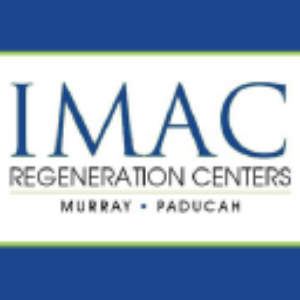IMAC Holdings, Inc. Announces Initiation of Second Cohort of its Phase 1 Clinical Study of Umbilical Cord-Derived Mesenchymal Stem Cells for the Treatment of Bradykinesia Due to Parkinson’s Disease
IMAC Holdings has commenced the second cohort of its Phase 1 clinical trial for an investigational compound utilizing umbilical cord-derived mesenchymal stem cells to treat bradykinesia caused by Parkinson’s disease. The trial involves 15 patients in a dose escalation safety study across multiple locations. The Parkinson’s therapeutics market, valued at $2.61 billion in 2018, is projected to grow to $5.28 billion by 2025, highlighting the potential market impact of IMAC's developments.
- Initiation of the second cohort in Phase 1 clinical trial for Parkinson’s treatment.
- Potential market growth for Parkinson’s disease therapeutics from $2.61 billion in 2018 to $5.28 billion by 2025.
- None.
Insights
Analyzing...
BRENTWOOD, Tenn, July 13, 2021 (GLOBE NEWSWIRE) -- IMAC Holdings, Inc. (Nasdaq: IMAC) (“IMAC” or “the Company”), today announces it has initiated the second cohort of its Phase 1 clinical trial for its investigational compound utilizing umbilical cord-derived allogenic mesenchymal stem cells for the treatment of bradykinesia due to Parkinson’s disease.
About IMAC’s Phase 1 Clinical Trial
The Phase 1 clinical trial, consisting of a 15-patient dose escalation safety and tolerability study, is being conducted at IMAC Regeneration Centers in Chesterfield, Missouri, Paducah, Kentucky, and Brentwood, Tennessee. The trial is divided into three groups: 1) five patients with bradykinesia due to Parkinson’s disease received a low dose, intravenous infusion of stem cells which was completed February 26, 2) five patients will receive a medium dose intravenous infusion, 3) and five patients will receive a high dose intravenous infusion. IMAC’s medical doctors and physical therapists at the clinical sites have been trained to administer the treatment and manage the therapy. Ricardo Knight, M.D., M.B.A., who is medical director of the Mike Ditka IMAC Regeneration Center, is the trial’s principal investigator.
About Bradykinesia Due to Parkinson’s Disease
In addition to unusually slow movements and reflexes, bradykinesia may lead to limited ability to lift arms and legs, reduced facial expressions, rigid muscle tone, a shuffling walk, and difficulty with repetitive motion tasks, self-care, and daily activities. Parkinson’s disease is the typical culprit of bradykinesia, and as it progresses through its stages, a person’s ability to move and respond declines.
According to Zion Market Research, the global Parkinson’s disease therapeutics market was
About IMAC Holdings, Inc.
IMAC was created in March 2015 to expand on the footprint of the original IMAC Regeneration Center, which opened in Kentucky in August 2000. IMAC Regeneration Centers combine life science advancements with traditional medical care for movement restricting diseases and conditions. IMAC owns or manages over 15 outpatient medical clinics that provide regenerative, orthopedic and minimally invasive procedures and therapies. It has partnered with several active and former professional athletes including Ozzie Smith, David Price, Mike Ditka and Tony Delk to emphasize its focus treating sports and orthopedic injuries and movement-restricting diseases without surgery or opioids. IMAC also operates the BackSpace retail spine health and wellness treatment centers. More information about IMAC Holdings, Inc. is available at www.imacholdings.com.
# # #
Safe Harbor Statement
This press release contains forward-looking statements. These forward-looking statements, and terms such as “anticipate,” “expect,” “believe,” “may,” “will,” “should” or other comparable terms, are based largely on IMAC's expectations and are subject to a number of risks and uncertainties, certain of which are beyond IMAC's control. Actual results could differ materially from these forward-looking statements as a result of, among other factors, risks and uncertainties associated with its ability to raise additional funding, its ability to maintain and grow its business, variability of operating results, its ability to maintain and enhance its brand, its development and introduction of new products and services, the successful integration of acquired companies, technologies and assets, marketing and other business development initiatives, competition in the industry, general government regulation, economic conditions, dependence on key personnel, the ability to attract, hire and retain personnel who possess the skills and experience necessary to meet customers’ requirements, and its ability to protect its intellectual property. IMAC encourages you to review other factors that may affect its future results in its registration statement and in its other filings with the Securities and Exchange Commission. In light of these risks and uncertainties, there can be no assurance that the forward-looking information contained in this press release will in fact occur.
IMAC Press Contact:
Laura Fristoe
lfristoe@imacrc.com
Investor Relations:
Bret Shapiro
(516) 222-2560
brets@coreir.com







